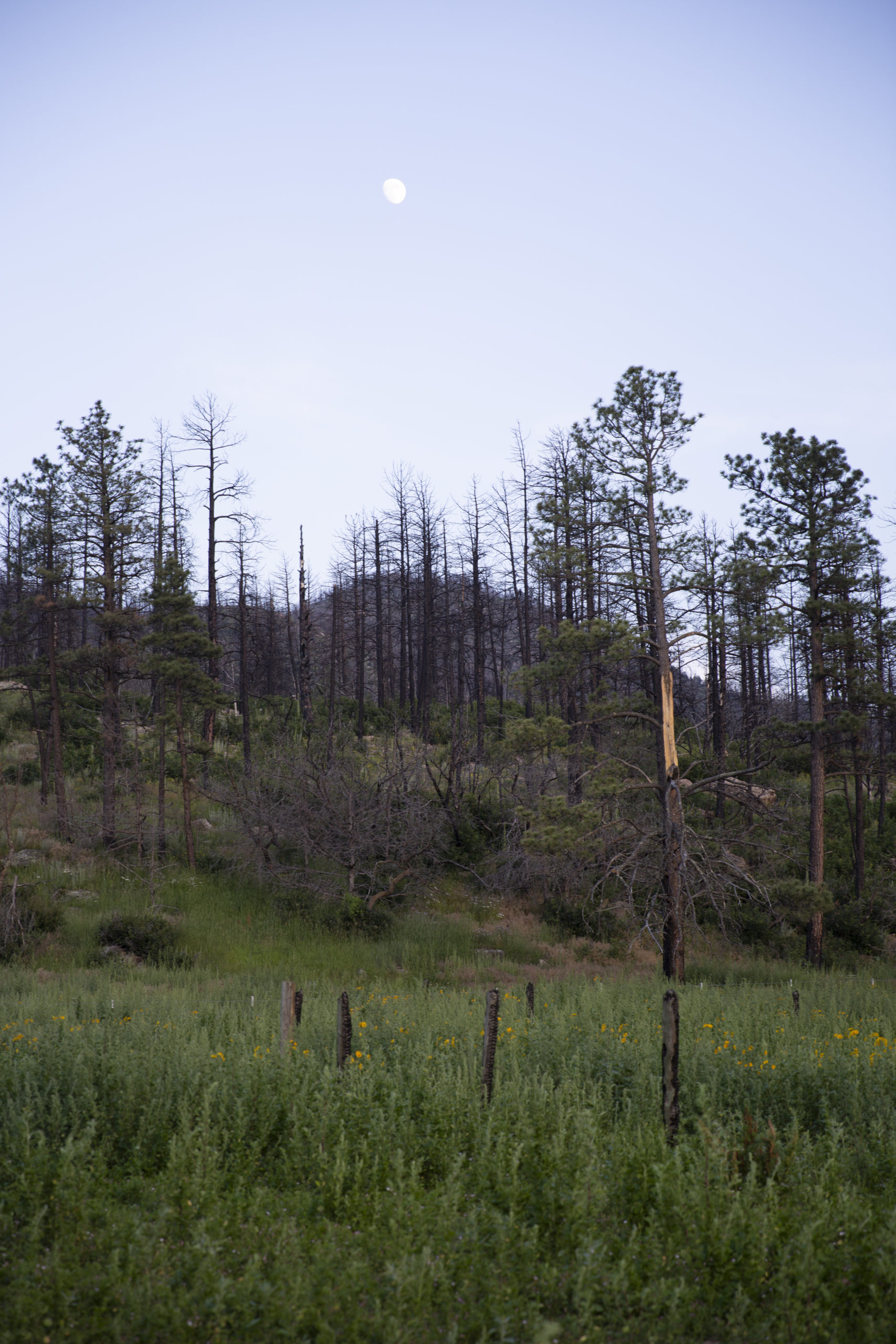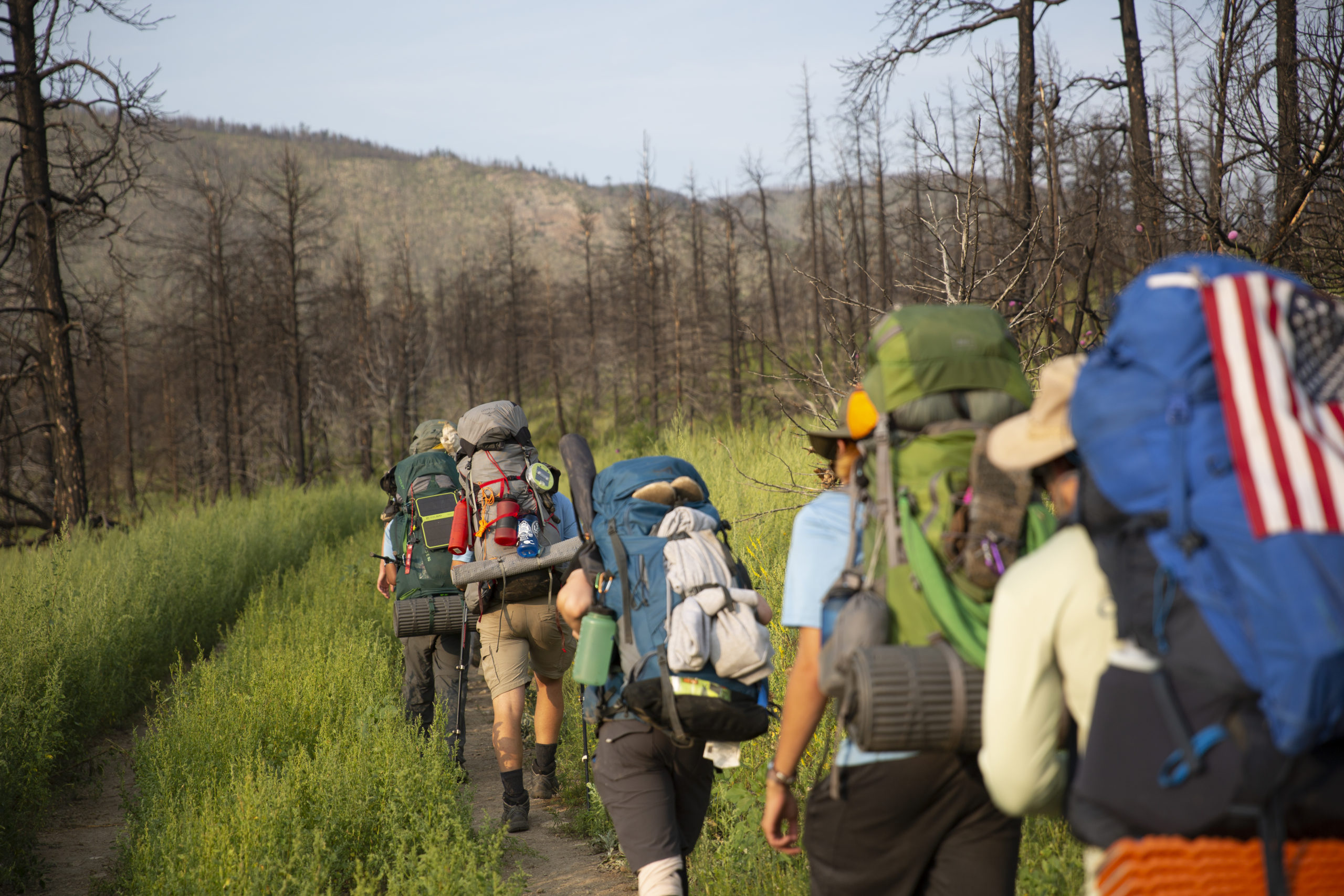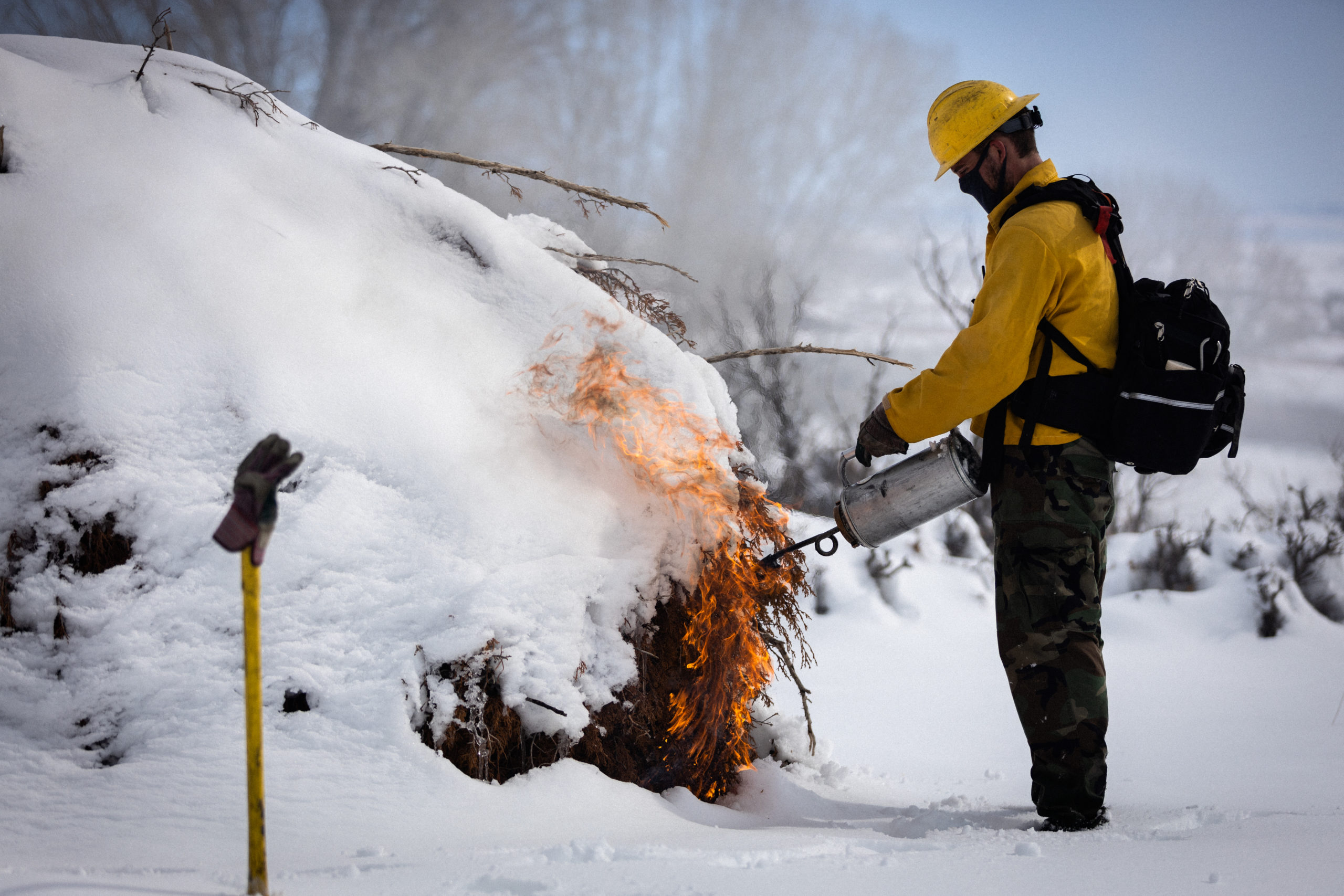August 21, 2021 – Philmont is a land that has been logged, mined, grazed and worked time and again. While often viewed as a pristine wilderness, this Ranch has had a long history of dramatic human disturbance. That disturbance has led to forests packed as thick as matches, streams cutting like knives into the land and mountainsides littered with the detritus of past generations. While Philmont’s Conservation Department in 50 years has done much to heal our lands here on Ranch, a new priority has taken hold: our forests.
This Ranch was once covered by a variety of vegetative communities, from short-grass prairie to sub-alpine forests. Each evolved to thrive on different ecosystem aspects, soil types and elevations. The actions taken by those who lived here, in many cases more than a century ago, would have consequences for generations to come.
What is missing in these systems today is the cyclical disturbance with which they evolved, primarily fire. Minus that disturbance, forests become overcrowded, even with periodic logging efforts. Philmont faces the same dangerous trends in forest health as is seen in much of the West and climate change compounds the vulnerabilities in our forests. The Conservation Department has been working year-round to address this since the all-clear was given following containment of the Ute Park Fire. Staff chainsaw crews have been executing specific prescriptions to address priority areas, such as Beaubien Road, in a triage effort to reduce the impact of the next fire. More than 5,000 piles of logging debris (known as “slash piles”) have been constructed. More than 2,000 of those have been burned while a protective layer of snow carpets the ground. This work has been funded by generous donations to the Ute Park Fire Fund by those who love Philmont and appreciate the urgent need for timely management.

The 2018 fire is a prime example of what the conditions of Philmont’s forests can lead to. This summer marks the first time scouts can experience the impact of the fire firsthand by hiking through the burn. A burn hike from Cimarroncita to Sawmill takes you right down and through the bulk of the Ute Park Fire burn area.
When staying the night at Cimarroncita, you can step out onto the porch of the staff yurt and look out onto hillsides covered in black spires, the remains of trees killed by the fire. From that removed perspective, the land looks desolate and dead. However, as you begin your hike to Sawmill, with a staff guide accompanying your crew the entire way, you find that being immersed in what fire leaves behind can change your perspective.

The burn area is littered with those same hulks of flame-scorched trunks but when hiking amongst them, you can see the forest is not entirely dead and gone. The area is often called the burn scar, but for crews hiking through the land, they’ll find life vigorously taking advantage of new conditions. The land burned in 2018 will not remain burnt and scarred but will change and grow, as nature does.
The floor of the burn area is covered in thick grasses and many flowers. A crew hikes through a verdant patchwork tapestry of flora. But there is fauna, too. Life has returned to the burn area. For while the loss of the forest reduced habitat for some species, it’s created prime conditions for others.
The burn is called a scar because it feels like it will remain broken and damaged forever. However, life is already returning and making the place its own. The reality is that it will remain changed for many, many years to come. The area that was burned in the 2002 Ponil Complex Fire is still recognizably a burn zone some 20 years later.
According to Brad Nellis, Philmont’s forester, the Ranch’s primary focus after the 2018 fire was erosion control; many erosion control structures were installed in the burn area throughout 2019. Additionally, Nellis said that after the 2002 fire about 80,000 seedlings were planted to repopulate the forest, however, Nellis said only about one percent survived to maturity. The low survival rate was due to dry conditions, deer and elk browsing, and damaged soils. Nellis said the Department is waiting for the completion of a New Mexico State University research project examining ponderosa pine plantings to determine the best strategies for successful reforestation.
“A lot of our focus right now is not in the burned area. It’s in the other areas to prevent future crown fires [and to protect infrastructure],” Nellis said.

What the next 50 years of the Conservation Department has to look ahead to is a journey of forest management and restoration. The Department has contracted industrial machines to, in some cases, masticate and, in others, commercially harvest trees. The trees cut in the forest thinning have been processed with machinery acquired by the Conservation Department to address forest management needs, including a skid steer and a skidder to bring the logs to their portable sawmill to make lumber for Ranch projects. The summer of 2021 saw an increase in camper conservation projects dedicated solely to fuel reduction, now five of the 10 project sites. Additionally, a major goal is to bring Philmont’s forests to a place where prescribed burns become a regular, recurring aspect of the Ranch’s forest management. Nellis said to start, the Department hopes to get their first prescribed burns in the books this October with two small burn units, about 50 and 150 acres, respectively.
Incorporating fire mitigation as program provides scouts a new perspective on forests and fires.
“I would have definitely thought that it would have been barren, burnt land. I definitely didn’t expect it to be such lush vegetation. It was pretty surprising,” said Nolan Parrish, of crew 714-R who hiked the burn this summer.
Written by Jarod Contreras – MPS Writer.